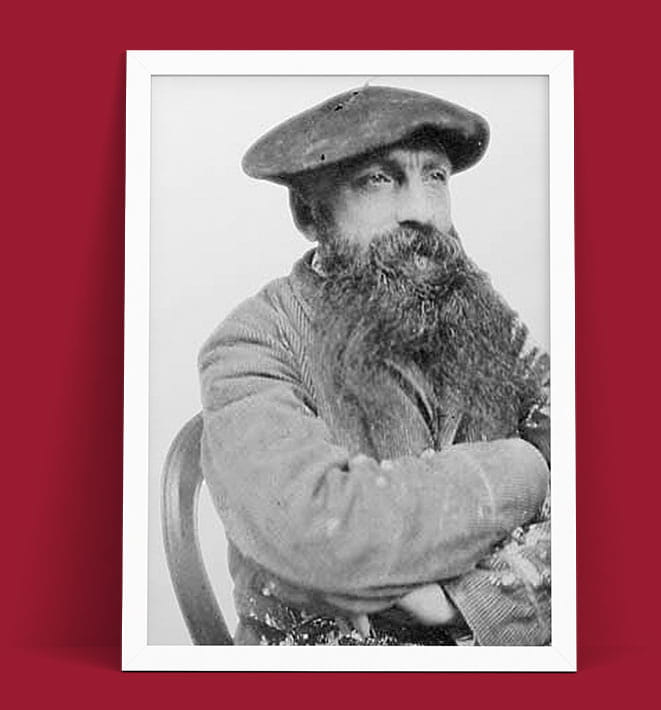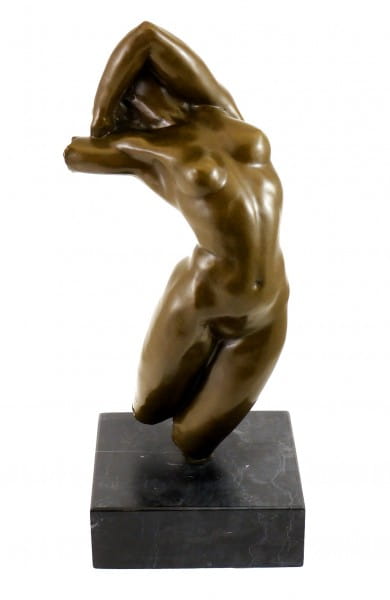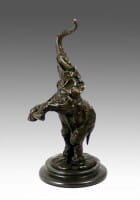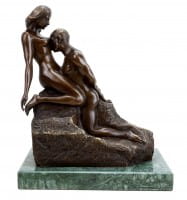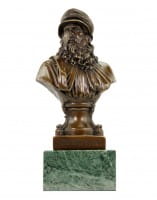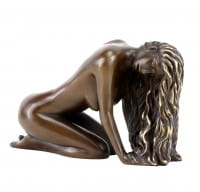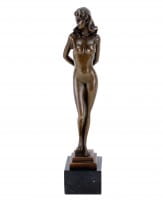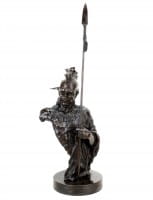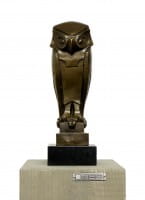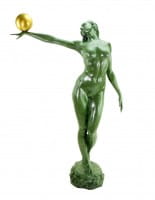Prices incl. VAT, free shipping worldwide
Ready to ship today,
Delivery time appr. 3-6 workdays










Product description
"Bronze Statue - Torso of Adele 1884 - Auguste Rodin"
| Height | 44 cm |
| Width | 17 cm |
| Length | 15 cm |
| Weight | 7,3 kg |
Auguste Rodin – Torso of Adèle (1884) in Bronze - Signed
The Rodin Sculpture Torso of Adèle stands as a remarkable exploration of the human body’s expressive power. Conceived between 1878 and 1884, with the first bronze casts completed in 1884, this work shows how Auguste Rodin transformed a simple torso into a living rhythm of curves and light. Though the figure lacks head and limbs, the piece vibrates with vitality, demonstrating that a fragment can embody the full essence of a human presence. Among all Auguste Rodin Artwork, it remains one of the most striking examples of his fascination with the beauty of incompleteness.
Life and Early Influences
Born on 12 November 1840 in Paris to a modest family—his father was a police clerk and his mother a seamstress—Auguste Rodin developed a passion for drawing at an early age. After several failed attempts to enter the École des Beaux-Arts, he studied at the Petite École, where he mastered naturalistic modeling. These formative years sharpened his understanding of anatomy and movement, laying the foundation for every celebrated Rodin Statue and helping him to break free from the rigid academic style of his time.
The Creation of the Torso of Adèle
The Torso of Adèle was first modeled in plaster during a period when Auguste Rodin was exploring how partial forms could carry as much emotion as complete figures. The bronze casts that followed in 1884 captured the delicate play of light on skin and muscle, turning an intimate study of a female model into a universal statement of sensual grace. This fragmentary approach was revolutionary, marking a turning point in the history of sculpture and elevating the status of every later Rodin Sculpture.
Sensuality and Motion in Bronze
The soft, flowing surface of this Rodin Statue draws the eye along the gentle twist of the torso, revealing strength and vulnerability at once. The uplifted arms and the subtle tilt of the chest suggest a quiet dance, while the absence of head and limbs invites the viewer’s imagination to complete the figure. Through this deliberate incompleteness, Auguste Rodin Artwork speaks of mystery, allowing light and shadow to become integral parts of the composition.
Enduring Legacy and Exhibitions
Today, casts of the Torso of Adèle can be admired in the Musée Rodin in Paris, the Metropolitan Museum of Art in New York, and the Musée d’Orsay, where the sculpture continues to inspire new generations. Each museum highlights how this Rodin Sculpture transcends time, offering a modern understanding of beauty and movement. Visitors can see how the piece captures the artist’s philosophy: that a fragment, precisely observed, can embody the entire spirit of life.
Rodin’s Lasting Influence
Throughout his career, Auguste Rodin challenged the conventions of nineteenth-century art, reshaping sculpture into a medium of raw emotion and physical truth. From his humble beginnings in Paris to his final years in Meudon, he remained devoted to exploring the human form. The Torso of Adèle stands as a testament to this quest, a luminous example of Auguste Rodin Artwork where a simple fragment becomes a timeless emblem of grace and passion.
Our advantages
free shipping
Worldwide free shipping
14 days money back
You can cancel your order
within 14 days
secure payment services
Paypal, Master Card, Visa, American Express and more

